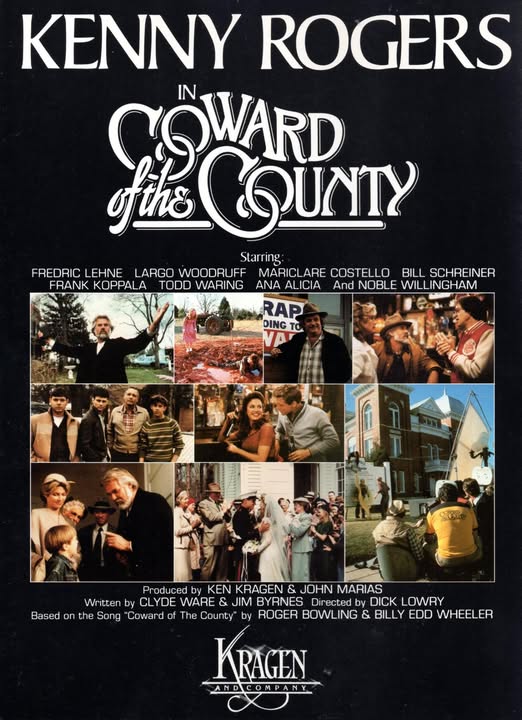A Tale of Redemption and Restraint Unveiled in a Rural Odyssey

Released as a poignant narrative nestled within the album Kenny, Kenny Rogers‘s 1979 hit, Coward of the County, achieved remarkable chart success, ascending to the top of the Billboard Country Singles chart and firmly securing its place in the annals of country music history. The song’s commercial triumph was mirrored by its profound resonance with audiences, capturing imaginations and hearts alike with its vivid storytelling and emotional depth.
The genesis of Coward of the County lies in its evocative storytelling, a hallmark of Kenny Rogers‘s musical prowess. Written by Roger Bowling and Billy Edd Wheeler, the song unfolds like a short film, its lyrics painting a rich tapestry of rural life, resilience, and the complex dance between violence and virtue. Central to its narrative is Tommy, a man burdened by the weight of his father’s reputation and his own promise of non-violence—a promise that becomes increasingly fraught as he navigates the trials of life in a small town.
In exploring the song’s thematic core, we encounter a potent meditation on masculinity and moral courage. Tommy’s journey is one marked by quiet dignity and forbearance, embodying a form of strength that eschews physical confrontation in favor of principled restraint. His father’s final exhortation—”Son, you don’t have to fight to be a man”—echoes throughout Tommy’s life as both a guiding light and a source of internal conflict. This tension between inherited wisdom and societal pressure underscores much of the song’s emotional impact.
Musically, Coward of the County is quintessentially country, its arrangement imbued with an authenticity that complements its narrative gravity. The instrumentation is spare yet evocative, allowing Kenny Rogers‘s warm, resonant vocals to take center stage. His delivery imbues each line with a palpable sense of empathy and understanding, inviting listeners to step into Tommy’s shoes and reflect on their own definitions of courage and honor.
The cultural legacy of Coward of the County extends beyond its initial release, having been adapted into a television film in 1981 that further cemented its status as a classic tale of personal redemption. This adaptation brought the song’s characters to life on screen, expanding its reach and deepening its impact on popular culture.
Ultimately, Coward of the County endures as a masterclass in storytelling through song. It challenges listeners to reconsider conventional notions of bravery, positing instead that true courage often lies not in fists raised but in promises kept—even when tested by life’s harshest realities. In this way, Kenny Rogers delivers not just a song but a timeless parable—a reminder that strength is not always measured by force but by the fortitude to stand by one’s principles amidst adversity.